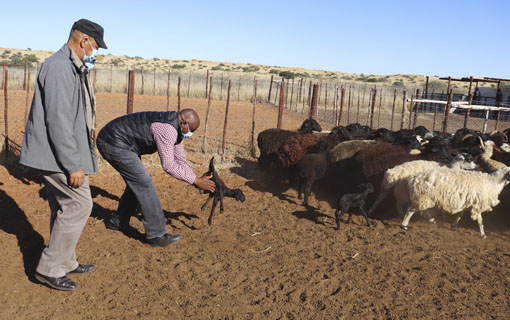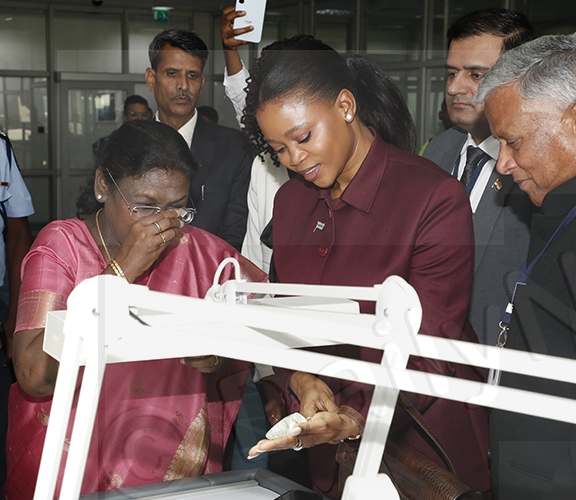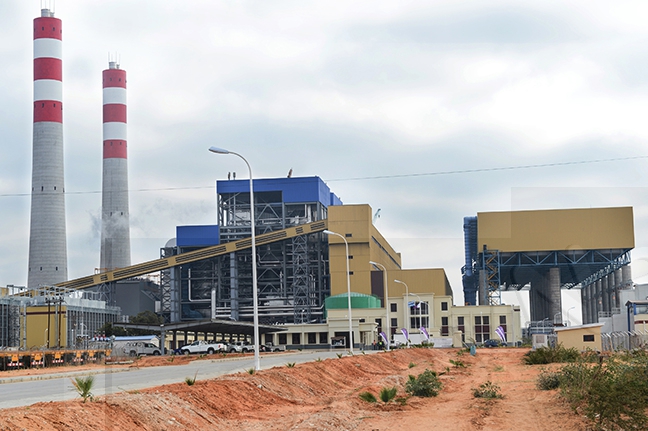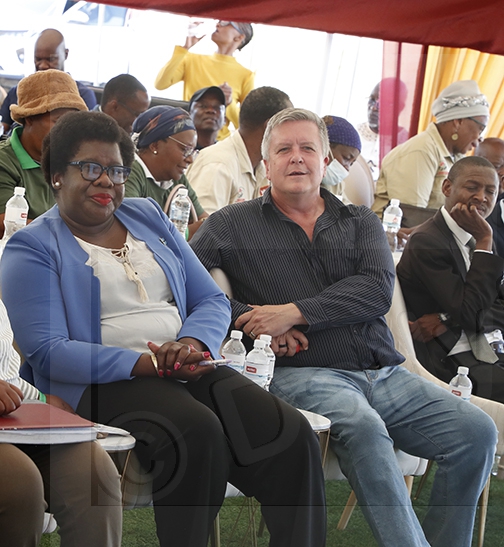Swakara Farm Glimmer of hope
23 Nov 2021
On the hoof of Botswana map lies a large piece of land in Khawa village which presents a glimmer of hope for economic diversification where production of Swakara sheep is steadily gaining traction.
The golden piece, which sits on 1496.09 hectares of land is set to launch Botswana into the world of fur fashion and garments made of Swakara pelts which have gained great popularity in recent years. Government is on an ambitious mission of facilitating a meticulous development of breeding of Swakara sheep for domestic and export market.
President Dr Mokgweetsi Masisi leads the project from the front. During his visit to the Swakara Farm, he called for increased production of quality and flock of Swakara sheep also known as Karakul sheep production to position the country on a competitive edge. Kgalagadi district, he said was renowned for Karakul sheep production but when the pelt market collapsed it affected farmers hence the need to devise new strategies of tapping into market. He said that an industrious approach of exploiting value chains was critical to ensuring success and sustainability of the Swakara Farm.
Dr Masisi highlighted that government continued to drive economic diversification and was exploring all avenues to realize that. He said while production of Karakul sheep was key objective, they must not place their eggs in one basket but rather diversify the farm by including small stock and cattle so that they can also benefit from the Tsabong multispecies abattoir currently under construction. He said adding that once the abattoir was complete, large quantities of small stock must be supplied reliably.
He buttressed the need for digitizing the Swakara Farm to ensure a wider business reach and a robust marketing strategy to position the farm internationally. Benefits of undertaking such a development, he said, auctions would be held virtually which would expose the farm to international market. Thus Dr Masisi called for a fast paced operational plan adding that the community should meaningfully participate to gain financially from the farm. To fast track developments at the farm he encouraged Khawa Kgosi Piet Manyoro to call ‘molaletsa’ to uphold the spirit of volunteerism where people participate voluntarily to complete the farm as government does not have funds. He said people should not always look to government for resources, adding that development should be community driven.
Tsabong Sub District Council senior assistant council secretary, Mr Jimmy Mackenzie said the farm which currently boasts of 96 karakul sheep and 10 lambs was funded by government to the tune of P2 million. The funds were used for borehole drilling, equipping and reticulation and paddocking of the farm, construction of kraals and farm houses. A further P1.5 million was disbursed for construction of a karakul sheep slaughter slab, construction of farm manager’s house, fencing of farm extension and increasing of breeding stock.
Khawa Kopanelo Development Trust secretary, Mr Moseka Seitshiro said the farm is a community project which started in 2014. The project was first funded by Orange-Senqu River Commission Secretariat (ORASECOM) whose aim was to assist the people of Khawa village to move from hunting to livestock production as a way of protecting the ecosystem. They procured 100 ewes of karakul sheep and four rams as starting stock from Namibia where they benchmarked on production.
At the time, he said, the trust did not have land and the sheep was kept at Lobu Smallstock Farm for some time until the trust was able to secure land. The Karakuls were later relocated to Swakara Farm in Khawa in 2019. The farm has been paddocked into four and plans are underway to reticulate water to all paddocks and to procure more flock to bring the farm to maximum use.
He said most pelt buyers value qualities such as silkiness, gloss and shape of curls which are distributed uniformly. To preserve the gloss and curls of the pelt, he said the lamb must be slaughtered within a few days after birth.
Khawa Kgosi Piet Manyoro welcomed the development. He said the major source of income in the village has been the annual Khawa Dune Challenge adding that Swakara Farm would assist greatly to uplift livelihoods so that they have diversified source of income.
He narrated that before the pelt market decimated in 1978, most Karakul sheep farmers in Kgalagadi who were mostly found in the BORAVAST cluster, Khawa, and Gakhibane. They produced and sold pelts to a large corporation in South Africa near the Bokspits border, but when the market collapsed production dropped dramatically.
Meanwhile karakul farming is a lucrative business in neighboring countries. According to Farmers weekly, “Karakul farming in South Africa and Namibia is a small but thriving industry. The Karakul industry has survived two decades of declining demand for Swakara pelts with the number of Karakul stud breeders dropping dramatically from more than 700 in the 1970s to the current number of 54. “There are only 14 active members in the Karakul Club. The industry, like the breed, seems a hardy one.”
University of Namibia, Department of Animal Science, Faculty of Agriculture and Natural Resources states, “The Karakul is a broad-tailed sheep with long hair which produces curly pelts originates from Central Asia. The breed is named after a village called Karakul in West Turkistan, a high altitude region with little water and it is therefore very hardy and well adapted to arid conditions. It is mainly kept for fur, or pelt. Other products include milk, meat, and wool.”
Furthermore, “Karakul farming slowly developed into a new agricultural enterprise in Namibia, provided jobs to thousands of Namibians, and contributed significantly to Namibia’s economy. Revolutionary work was done in the improvement of Karakul pelt in Namibia, resulting in pelts that are different from the original Karakul species with very unique pelts that have short hair, exceptional patterns and better hair texture.
Akin to Farmers weekly, the Namibian scholars state that “In the 1980s, the Karakul industry almost totally collapsed. This was as a cumulative result of various factors including economic recession conditions in consumer countries, changes in fashion whereby lifestyle had changed within a short period of time from formal to very informal and anti-fur campaigns. However, there has been resurgence in the Namibian Pelt industry, which today is a small, but thriving industry that offers sought-after pelt products. ENDS
Source : BOPA
Author : Calviniah Kgautlhe
Location : Khawa
Event : feature
Date : 23 Nov 2021






